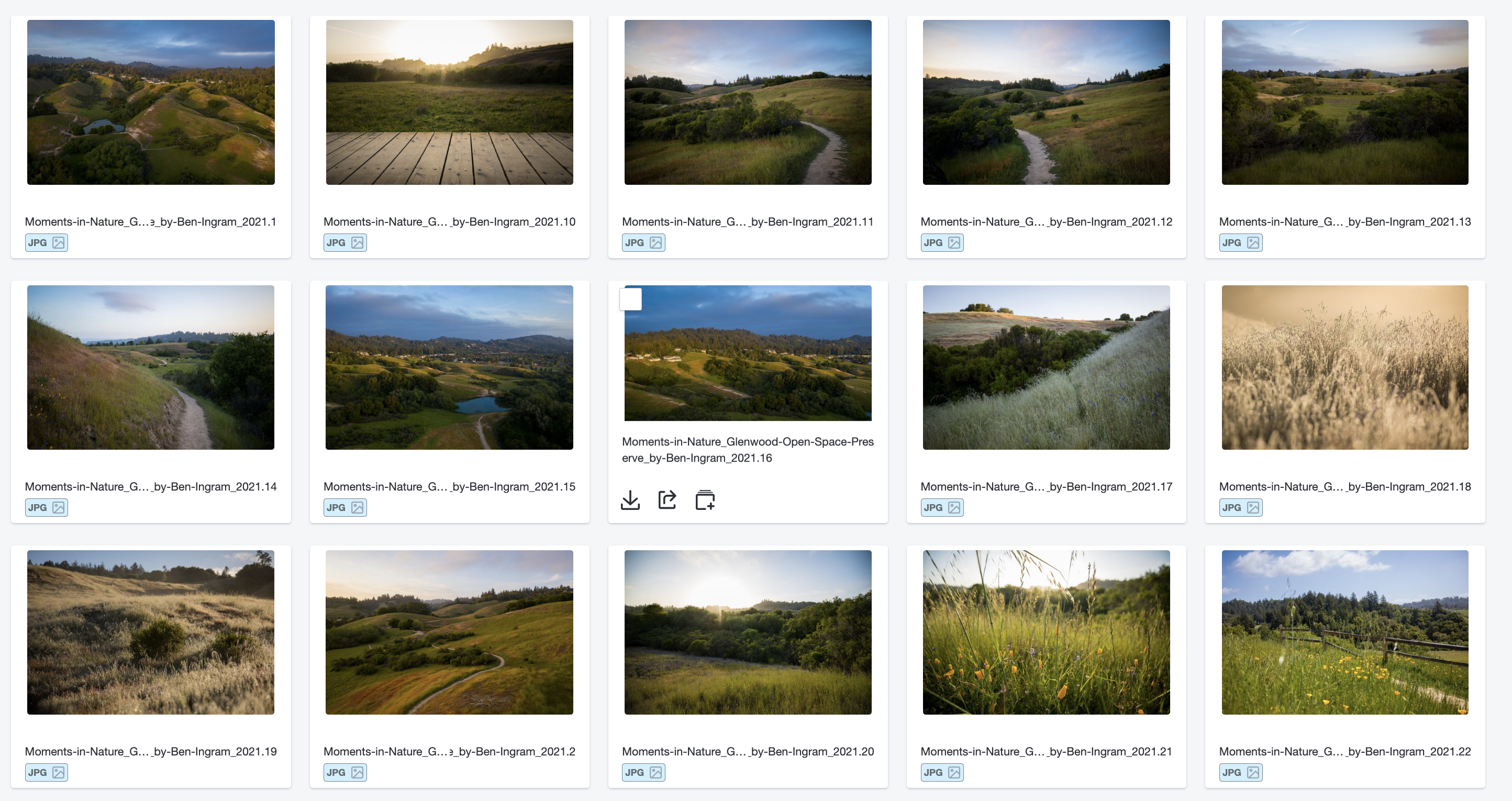Getting Started with Digital Asset Management (DAM) Software: File Naming Best Practices


We often get asked about how to name files. It’s an area where a lot of organizations get stuck. Many don’t have a consistent convention, which means people use their own individual naming conventions. This can lead to duplicate file names, confusion, and files whose names don’t provide any information whatsoever. Some organizations have consistent naming conventions and still wonder if they are doing it right and if the file names contain the right information.
We want to help! In this post we’ll give some guidelines so you can build a naming convention that works for your team.
Why use a convention?
Why do we recommend file name conventions if you’re implementing Digital Asset Management Software? What is the purpose of defining your file names? It is valuable to create a defined nomenclature ($5 word for “system of naming things”) so users quickly understand basic information about the file at a glance, as well as to support search abilities in any system in which the file resides. There are also aesthetic reasons, and extra chances to develop your banding as well.
Inside your Digital Asset Management Software you may have lots of supporting metadata for your files; descriptive text, tags, folder names, etc. But even inside the Digital Asset Management System, a robust filename will educate the users about a file’s contents without requiring them to open more windows. File naming conventions help with legibility, and are also important for file stability (preservation). This translates to ease of use, shorter work paths, and happier users.
Just as important, when recipients outside your Digital Asset Management Software download your files to their machine the filename alone can better support the recipient by educating them about the file in question. This is also an opportunity for some branding - do you really want them to download a file called IMG_003.jpg? And when your recipients contact you later, inquiring about a file named IMG_003.jpg, will you even know which file they are referring to? One can learn a lot from a properly named file.
Who names the files?
When considering the filename convention and its potential complexity, it is important to also think about your content creators. How many creators or contributors upload files to the Digital Asset Management Platform? Can they be relied upon to follow a naming convention? Often companies have multiple admins contributing to the library, so file naming conventions are harder to enforce. It is easier to keep a consistent convention when only one or two people upload or everything passes through them. That is not to say it can’t be done with a big group, as long as everybody is on board and the naming is simple. The key is creating that simple, repeatable, and understandable convention.
When should you name files?
When should file naming happen? The best answer for that is before the file reaches the Digital Asset Management System, if done correctly this then alleviates the task from the DAM manager. If you have a photographer or designer creating assets for your company, you will need to discuss your naming needs with them and provide the minimum requirements; what information do you want in the name, and potentially what metadata do you want captured - that discussion is for another time. It is not uncommon for these minimum requirements to be part for the creators file and metadata task to be included in the job contract. The content creators should be able to provide you the files already named (and embedded with metadata) so you may immediately distribute files, or utilize the file names in further workflows.
The rule of thumb in any Digital Asset Management practice is never “do it later”... If you have files (existing or new) without unique names, the best time to edit those is as early as possible in their life cycle, at upload or when you are adding metadata to them. Make sure you document your file naming convention and provide that information to all your team members so that everyone is on the same page and has a reference sheet to guide them.
Basic Rules: DOs and DON’Ts
These general file naming practices will lend conformity and function to your library. Some basic rules to follow are:
DO:
• Start with general information (on the left) and get more specific as you move through your file name, just like you do in your folder structure. This helps your files sort logically, from the top down.
• Include a general prefix (brand, client, or product).
• Use a specific suffix (version number, color).
• Keep your abbreviations short but significant, 2-3 letters if possible, as long as they have a commonsense meaning.
• Use hyphens to help with readability. Do not use spaces or underscores. (See the note in the Don’t section)
• Use all lowercase letter to ensure cross-platform operability.
• Dates should list year, month, and day (YYYYMMDD) in order to have the files sort chronologically.
• If you use numbers at the start of the filename, start with zeroes so that your files sort correctly (0001, 0002, 0003 etc).
DON'T:
• Do not use of periods in the filename itself as they affect stability in reference to file format. Use periods only before the format suffix (eg filename.jpg).
• Do not use special characters in the filename (for example; < > | [ ] & $ + \ / : * ? “) as they may inhibit your file name being cross-platform compatible.
• Do not create overlong filenames. For example the Windows API imposes a maximum filename length such that a filename, including the file path to get to the file, can’t exceed between 255-260 characters. In some user interfaces a very long filename may be truncated in the view and so not useful.
• Do not use spaces or underscores in the filename, use hyphens instead. Why not have spaces in a file name? This is to do with the inevitable creation of URLs to link to files where a space signifies the end of the command or name. Why not use underscores? Because Google says so, “We recommend that you use hyphens (-) instead of underscores (_) in your URLs.” Google and other indexes will include the words between the dashes in their search index thus improving your SEO. Additionally dashes are easier to read than underscores to the human eye, and certainly when underlined as a URL.
Just as different business types organize digital assets in certain ways, so will filenames across different companies look different. Apparel and sport companies, for example, may have seasonal or yearly products and that would be reflected in a potential filename - as opposed to a food and beverage company that may have products that are available year round and year after year (evergreen).
Service industries, non-profits, and agencies often organize evergreen materials, as well as work in campaigns. In these instances the campaign name, or subject, is more important than the “season.”
Example 1: Product shots for a sporting goods company.
Filename may follow the form brand-season-product-color code. Thus a real file name would be in the form of:
rossignol-SS2020-racingboots-01234.jpg.
This works because in a mix of other materials the downloader or library user will quickly see and sort by brand and season, then can move to product type and finally a certain color if needed.
Example 2: Higher education marketing materials.
Filename may follow the form name of shoot-subject-date. Thus a real file name would be in the form of:
commencement2019-speaker-06062019.jpg
This works well for organizations that are campaign or event driven such as higher education or non-profits. Their assets are often time dependent.
Remember that the filename is not the sole source of information on the asset but for reasons described the filename is important for searching, and brand visibility. All of the file information should be included in the (searchable) metadata, so the file name then becomes a reference point.
It is important that you share the naming convention with the content creators, so files may be delivered to the library already named correctly. By pushing the file naming task up the chain to the point of creation, this takes the burden off the file manager and thus has a much higher chance of long-term success.
Simplicity is especially important if you have a larger team involved in naming files. You want to craft a filename with enough information to make the name unique, but not so complex that it is hard to understand. Remember - start with general information (on the left) of the file name and get more specific as you move through your file name.
We hope this short guide to file naming best practices can help your team develop your own file naming convention. If you need any advice, please don’t hesitate to reach out at james@imagerelay.com. And if you want to learn more about the importance of digital asset management, please read our guide all about it. Learn about the Value of Digital Asset Management here, or get the guide below.
For more in our Getting Started with Digital Asset Management Series, check out these helpful resources:
- Getting Started with Digital Asset Management (DAM): Managing User Access with Permissions
- Getting Started with Digital Asset Management (DAM) Software: Mapping Your Organization’s Content
- Getting Started with a Digital Asset Management (DAM) Platform: Best Practices for File Types
- Getting Started with Digital Asset Management (DAM) Software: Understanding Your Team Needs
- Getting Started with Digital Asset Management (DAM): Metadata Part 1
- Getting Started with Digital Asset Management (DAM): Metadata Part 2



